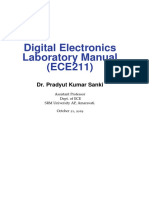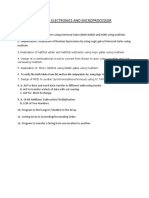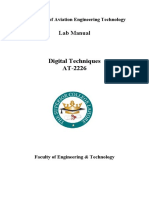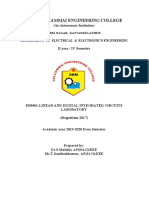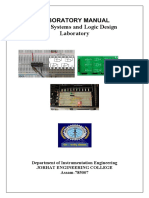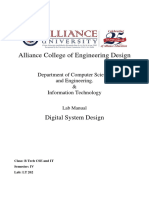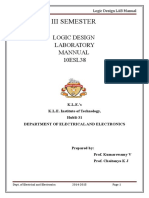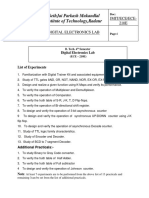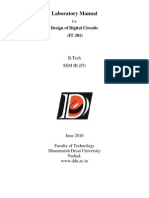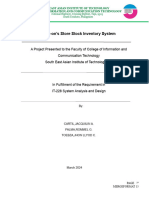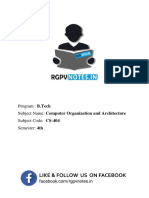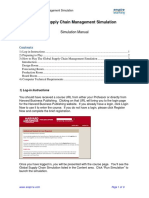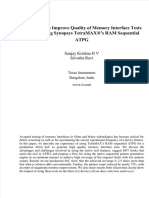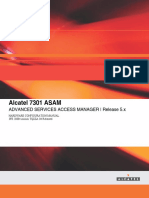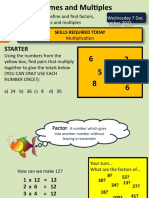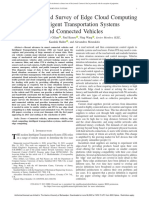0% found this document useful (0 votes)
140 views32 pagesDLD Final Manual
This document contains information about a lab manual for a course on digital logic design. It lists 15 experiments involving topics like logic gates, multiplexers, decoders, latches, flip flops, counters, adders and digital circuits. It provides objectives, equipment, procedures and observations for each experiment. The experiments are designed to help students learn and verify the operation of basic digital components and circuits through practical hands-on experience.
Uploaded by
M. Rayyan DawoodCopyright
© © All Rights Reserved
We take content rights seriously. If you suspect this is your content, claim it here.
Available Formats
Download as DOCX, PDF, TXT or read online on Scribd
0% found this document useful (0 votes)
140 views32 pagesDLD Final Manual
This document contains information about a lab manual for a course on digital logic design. It lists 15 experiments involving topics like logic gates, multiplexers, decoders, latches, flip flops, counters, adders and digital circuits. It provides objectives, equipment, procedures and observations for each experiment. The experiments are designed to help students learn and verify the operation of basic digital components and circuits through practical hands-on experience.
Uploaded by
M. Rayyan DawoodCopyright
© © All Rights Reserved
We take content rights seriously. If you suspect this is your content, claim it here.
Available Formats
Download as DOCX, PDF, TXT or read online on Scribd
/ 32


